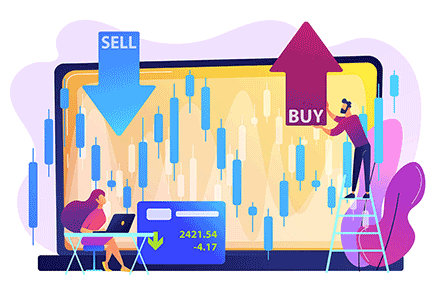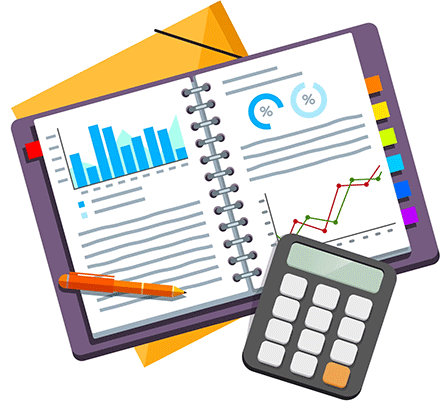This comprehensive article will unravel the intricacies of Forex hedging, furnish you with a practical example of a Forex hedging strategy, and delve into the "Hold Forex Strategy" and more. Hedging, in simple terms, entails taking a position to counterbalance the risk of future price fluctuations. It's a routine financial maneuver conducted by businesses as an integral part of their operations. Companies often find themselves exposed to the volatility of foreign currencies and the price fluctuations of raw materials.
In response, they strive to mitigate or eliminate the risks associated with such exposures through financial transactions. Financial markets were, to a large extent, established to facilitate precisely these types of transactions, where one party transfers risk to another. For instance, consider an airline facing exposure to jet fuel costs, which are closely tied to the price of crude oil.
Crude oil is internationally priced in US dollars. When futures contracts expire, the company takes physical delivery of the oil and pays in US dollars. For a non-US company, this exposes them to currency risk. Hence, it's highly likely that the company would engage in Forex hedging to hedge its foreign exchange risk. In this scenario, the company would sell its native currency to purchase US dollars, thereby covering its dollar exposure arising from the crude oil position. It's not only corporations that partake in Forex hedging; individuals may also find themselves in situations where foreign exchange hedging becomes an appealing option.
How to Hedge in Forex?
Forex hedging can be executed through various methods. You can opt for partial hedging to shield against some adverse movement's impact, or complete hedging to entirely eliminate exposure to future fluctuations. The choice of instruments for hedging includes futures or options, but we'll focus on the spot FX market. Imagine you own an overseas asset and want to hedge against foreign exchange risk. Suppose you reside in the United Kingdom and have invested in Nintendo shares before the Pokemon Go phenomenon, resulting in significant profits.
Now, assume your unrealized profit stands at JPY 1,000,000. If you decide to lock in the profit, you can sell your shares and convert the yen back into British pounds. At a GBP/JPY rate of 137.38 (ignoring transaction costs), your profit would be 1,000,000/137.38 = £7,279.
But what if you wish to retain your shares in hopes of further gains? In such a case, you can maintain your long exposure to Nintendo while also gaining exposure to GBP/JPY. This is where hedging comes into play.
Hedging Example
In the scenario outlined above, you can hedge your forex risk. Let's say you want to entirely eliminate your foreign exchange risk, which would require: Purchasing £7,279 worth of yen. One contract of GBP/JPY equals £100,000. Therefore, you would need to buy 7,279/100,000 = 0.07279 contracts. If the yen weakens against the pound, your GBP/JPY trade will yield profits as the exchange rate rises. The gains from your Forex risk hedging should offset the adverse impact of the weaker yen on your equity trade.
In practice, currency risk may fluctuate as the share value changes. Consequently, you might need to adjust the hedging amount as the share value fluctuates. Now, let's explore Forex traders who focus solely on currency trading:
Hedge and Hold Strategy in Forex Hedging
Hedging aims to reduce risk and safeguard against unwanted price movements. It's the simplest way to curtail risk by closing or reducing positions. However, there are situations where temporarily or partially reducing exposure is preferred over complete closure.
For instance, consider an investor holding multiple FX positions in the lead-up to the Brexit vote:
- Short one lot of EUR/GBP
- Short two lots of USD/CHF
- Long one lot of GBP/CHF
While these positions might be desirable for the long term, concerns arise about potential volatility in the GBP leading up to the Brexit vote. Instead of exiting these positions entirely, the investor decides to hedge by taking an additional position - selling GBP/USD. This move reduces exposure to GBP because pounds are sold, and US dollars are purchased, whereas existing positions involve being long GBP and short USD.
To achieve a complete hedge of sterling exposure and remove exposure to USD, the investor can sell two lots of GBP/USD. Alternatively, they might opt for a smaller hedge, depending on their risk tolerance.
Hedging with Correlated Currency Pairs
Another approach to currency hedging involves placing trades with correlated currency pairs. The Correlation Matrix, available with the MetaTrader 4 Supreme Edition plugin, helps traders view and compare correlations between different currency pairs in real-time. If you identify a currency pair strongly correlated with another, you can construct a position that is nearly market neutral. For instance, if you have a long position in GBP/USD and observe that USD/CAD has a strong negative correlation with GBP/USD, buying USD/CAD can act as a hedge. However, it may not provide a complete hedge if the correlation isn't perfect.
Forex hedge funds are known for combining correlated positions to offset risk, earning their name from this strategy. For those interested in experimenting with trading strategies, it's possible to practice and trade risk-free with real-time data and virtual funds, protecting your capital from risk.
Hedging with Robots: A Robot's Touch
Hedging with automated trading tools or robots can offer benefits to some traders. Once configured, these robots handle much of the work for you. Forex hedging robots are designed around the concept of hedging, which involves opening numerous additional positions and buying and selling simultaneously while incorporating trend analysis. The goal is to protect yourself against unforeseen market movements, ensuring that your floating balance remains positive.
It's important to note that you may have multiple positions open concurrently to comply with FIFO (First In, First Out) rules, as well as to ensure compliance with your broker's regulations.
Is Hedging Legal?
Hedging through Forex trading is prohibited in the United States. To clarify, not every form of hedging is banned in the U.S., but the focus of the law revolves around buying and selling the same currency pair at the same or different strike prices. Consequently, the Commodity Futures Trading Commission (CFTC) has imposed trading restrictions on Forex traders. However, Forex hedging is legal in numerous other countries, including many in the European Union, Asia, and Australia.
Hedging is a valuable risk mitigation technique, but it comes with its own costs. Transactional costs are involved, and hedging can diminish potential profits. A hedge inherently reduces exposure, shielding against adverse price fluctuations in the future.
However, hedging Is not a guaranteed profit strategy, irrespective of market movements. Hedging serves as a means to limit the potential impact of unfavorable price fluctuations in the future.
There are moments when simply closing or reducing an open position is the most prudent course of action. In other instances, a hedge or partial hedge may be the more suitable choice. Align your decision with your risk tolerance and objectives.
If you'd like to delve deeper into Forex hedging and explore other hedging strategies, read our article on "How to Use a Forex Hedging Strategy to Pursue Lower-risk Profits."
For trading, you can utilize MetaTrader 4 and MetaTrader 5, along with the enhanced MetaTrader Supreme Edition. This advanced version offers additional features such as the correlation matrix, enabling real-time comparison of different currency pairs, and the mini trader widget, allowing you to execute trades in a small window while attending to other essential tasks.
Top Hedging Forex Brokers for Enhanced Trading
When it comes to hedging in forex trading, choosing the right broker is crucial. Here are the best forex brokers for hedging, tailored to suit various trader profiles, preferences, and expertise levels.
FOREX.com - Best for High Volume Forex Trading
For high-volume forex trading, FOREX.com is a top choice. Offering a comprehensive selection of over 80 currency pairs, FOREX.com caters to seasoned traders. The platform specializes in forex, spot gold and silver, options, and futures. To empower traders, FOREX.com provides access to over 90 indicators and an abundance of information necessary for informed decision-making. Additionally, the broker offers extensive educational resources and research tools. FOREX.com holds licenses from four tier-1 jurisdictions, ensuring reliability. Traders can opt for MT4 or the user-friendly proprietary FOREX.com app and desktop platform. High-volume traders gain access to tiered commission structures and market visibility through DMA accounts.
OANDA - Best for Novice Forex Traders
OANDA caters to novice forex traders with over 70 currency pairs and an inclusive platform. The platform features charting tools and more than 50 indicators, all presented in a simple yet sophisticated layout that even beginners can navigate effortlessly. Traders can personalize layouts, track analytics, and receive instant news updates. While OANDA supports social trading through its chat function in TradingView, it does not provide the ability to automatically follow another person's trades.
Interactive Brokers - Best for Professional Traders
Professional traders seeking a wide range of assets from 135 global markets should consider Interactive Brokers. With two account options, traders can choose IBKR Lite for low-cost asset trades and free stock trading, or IBKR Pro for high-level research and analysis tools at low commissions. Interactive Brokers boasts a comprehensive trading platform, which may be a bit intimidating for novice traders. However, the newly introduced IBKR Lite aims to cater to more retail customers. In your quest for the perfect hedging forex broker, consider these options based on your trading style, preferences, and expertise. Each broker is tailored to meet specific needs, ensuring you have the necessary tools and resources to thrive in the dynamic world of forex trading.
Mastering Forex Broker Selection for Hedging Strategies
Hedging is a pivotal risk management technique in forex trading, providing a shield for your current position when market movements oppose your trade direction. The key to effective hedging lies in partnering with a reliable forex broker. Here, we explore the factors to consider when choosing the best forex broker for your hedging endeavors.
Safety is paramount when selecting a forex broker for hedging. You entrust your hard-earned capital to the broker, and safeguarding it is non-negotiable. Look for brokers regulated by reputable financial authorities, including the UK FCA, ASIC, or CySEC. These regulators establish stringent standards that brokers must adhere to, offering a protective shield against fraud and negligence.
We categorize regulators into four tiers:
- Tier-1: Regulators located in renowned financial centers with a strong track record of protecting traders. Examples include the UK Financial Conduct Authority (FCA) and the Australian Securities and Investments Commission (ASIC).
- Tier-2: Regulators in established but smaller financial centers, like the Cyprus Securities and Exchange Commission (CySEC) and the Financial Markets Authority (FMA) of New Zealand.
- Tier-3: Regulators in offshore locations, often with lower regulatory oversight than Tier-1 or Tier-2 regulators. Examples include the International Financial Services Commission of Belize (IFSC).
- Unregulated: Brokers not regulated by any financial authority, typically based in offshore locations like St. Vincent and the Grenadines. These brokers are high-risk and best avoided.
Tier-1 regulators, such as the UK FCA, CySEC, and ASIC, offer the highest level of trader protection. They require brokers to segregate client funds from their own, ensuring your funds remain separate. These regulators also mandate negative balance protection, preventing your account balance from going below zero. Furthermore, brokers under Tier-1 regulators participate in compensation schemes, offering protection in case the broker faces insolvency.
Always verify the regulatory status of the specific broker entity you plan to open an account with, as brokers may have multiple entities worldwide. Cross-check this information with the regulator's online register. For your convenience, we've created a comprehensive guide on the best regulated forex brokers.
Understanding the fee structure is crucial when choosing a forex broker. Fees can be categorized into trading fees and non-trading fees.
Trading Fees:
- Spread: The difference between the buying and selling prices of a financial instrument. Seek brokers offering low spreads.
- Commission: A flat fee charged for opening and closing trades. It's usually applied per lot or per 100,000 units of the base currency. Opt for brokers with low commission rates.
- Swaps: Fees for holding leveraged positions overnight, determined by the interest rate differential of the currency pair and broker markup.
Non-Trading Fees:
- Account opening, deposit, and withdrawal fees: Charges for initiating transactions. Ensure these fees are reasonable.
- Inactivity fees: Fees levied on dormant accounts. Check if these fees apply.
- Education and research fees: Some brokers offer educational resources and research materials for a fee. Examine the value provided.
To gauge fees, consider using a demo trading account or begin with a live account using the minimum deposit. Alternatively, consult our broker reviews on FX Empire, where our team of analysts has already assessed fee structures.
Account Types That Support Hedging
Brokers typically offer various account types, each with distinct features, services, and products. Ensure the account type you select allows for hedging. While some fixed-spread accounts may not permit hedging, brokers offering accounts with floating spreads tied to the underlying market are more likely to support hedging. Many brokers now offer demo trading accounts, allowing you to test different account types without financial risk. Explore brokers with the best forex trading demo accounts to start your evaluation.
Leverage is a powerful tool in forex trading that amplifies both profits and losses. A broker offering 1:30 leverage allows you to control a position 30 times larger than your deposit. While higher leverage offers potential for greater returns, it also heightens the risk of substantial losses. In 2018, the MiFID II European Market Act Directive implemented a 1:30 leverage cap on retail clients trading forex under Tier-1 regulators. Professional traders may access higher leverage, but this entails relinquishing some retail trader protections, such as negative balance protection.
It's essential to comprehend the leverage offered by your chosen broker and its regulatory implications. Check FX Empire's list of the best forex brokers with high leverage for guidance.
Evaluate Trading Platforms
Brokers provide a variety of trading platforms, each with its unique features. The following platforms support hedging strategies:
- MetaTrader 4 (MT4): A widely used platform with a vast array of built-in indicators and tools.
- MetaTrader 5 (MT5): An enhanced version of MT4 offering additional timeframes, indicators, and algorithmic trading capabilities.
- cTrader: Designed for day traders and scalpers, this platform caters to high-frequency traders.
- TradingView: A browser-based charting and social networking platform boasting 50 million monthly users.
- Proprietary Broker Platforms: Some brokers create their own trading platforms.
Begin by testing each platform using a demo account. Utilize the broker's educational resources to determine the most suitable platform for your trading style.
Avoiding Forex and CFD Scams
Protect yourself from fraudulent forex brokers with these tips:
- Trade with Regulated Brokers: Ensure your broker is authorized by a reputable regulator.
- Check Contact Information: Legitimate brokers provide physical addresses and phone numbers on their websites.
- Use a Demo Account: Test the broker's platform and your trading skills without risking real money.
- Review Terms and Conditions: Understand the broker's policies before trading.
- Start with a Small Capital: Minimize potential losses when starting with a new broker.
By following these precautions, you can guard against scam forex brokers and trade safely.
Our Methodology
Forex Brokers Organization pioneers broker rating reviews with over a decade of experience. Our review process encompasses 250 data points across nine core categories: Trust, Fees, Platforms and Tools, Tradable Instruments, Customer Service, Deposit and Withdrawals, Account Types, Research, and Education.
Our team of analysts identifies the best forex brokers for hedging based on live testing results and criteria such as:
- Overall rating of 4+ in our review
- Regulatory oversight by authorized entities
- Account types supporting hedging
- A wide range of tradable instruments
- Competitive trading fees
- Accessible trading platforms
- Effective customer support
Our reviews aim to empower you with the information needed to make informed decisions when choosing a reliable broker for your hedging strategies.
Related Materials
Forex trading, an intricate dance of buying and selling currency pairs such as EUR/USD, GBP/USD, and USD/JPY, operates continuously five days a week. Often called foreign exchange trading, the core objective is to profit from shifts in currency pair values.
The forex market has witnessed a rise in the popularity of Percentage Allocation Management Module (PAMM) services, as both retail traders and institutional investors seek out ways to diversify their portfolios and earn passive income. As 2023 unfolds, it's pivotal to identify which brokers are at the forefront of offering top-notch PAMM services..
Copy trading, a revolutionary method in the trading world, has emerged as a boon for both seasoned traders and beginners. It's an automation process that allows traders to mirror the moves of more experienced counterparts.
The Forex market is the largest financial market globally, with a daily trading volume exceeding $6 trillion. Forex trading has become increasingly accessible to retail traders, thanks to the proliferation of online Forex brokers. However, selecting the right broker is a critical decision that can significantly impact your trading success.
Leverage is a powerful tool in the world of forex trading. It allows traders to control a large position size with a relatively small amount of capital, amplifying both profits and losses. While leverage can enhance potential gains, it also comes with significant risks. Therefore, choosing the right forex broker and evaluating their leverage offering is crucial for traders seeking success in the competitive forex market.
In the vast and dynamic landscape of global finance, the Forex market reigns supreme, presenting both unparalleled opportunities and significant challenges. At the heart of this complex ecosystem is the principle of risk management, a foundational pillar for anyone looking to navigate the often turbulent waters of Forex trading. In essence, risk management in Forex trading isn't merely a safety mechanism; it's an integral part of a holistic trading strategy, ensuring sustainability, promoting discipline, and maximizing the potential for success.
Brokers have a variety of ways in which they charge traders for their services. Understanding these fees and commissions is crucial for any trader who wants to manage their trading costs effectively.
The dynamics of the Forex market have dramatically evolved over the past few years, not just in terms of technology and tools, but also in how traders interact and share information...
Currency exchange rates are one of the most closely watched and analyzed metrics in the global financial market. Every day, businesses, tourists, governments, and traders seek to understand and anticipate changes in these rates, as they affect everything from the price of your morning coffee to billion-dollar business deals...
In the rapidly evolving world of online trading, where decision-making speed, strategy efficacy, and real-time responsiveness play crucial roles, preparation becomes paramount. This is where demo accounts enter the scene, offering aspirants and seasoned traders alike an invaluable platform. Designed to mimic real-world trading conditions without actual financial risk, demo accounts serve as a bridge between theoretical knowledge and real-world trading execution. They provide an arena for traders to practice, learn, and refine their strategies, ensuring they're equipped with the experience and confidence needed to navigate the often tumultuous waters of the financial markets.
Trusted Forex Brokers
| Broker | Review | Rating | |
|---|---|---|---|
| 1 | HF Markets | ||
| 2 | NordFX | ||
| 3 | Octa | ||
| 4 | FXCM | ||
| 5 | Interactive Brokers | ||
| 6 | ActivTrades | ||
| 7 | FXTM | ||
| 8 | easyMarkets | ||
| 9 | HYCM | ||
| 10 | SaxoBank | ||
| 11 | FxPro | ||
| 12 | Moneta Markets | ||
| 13 | XM | ||
| 14 | FOREX.com | ||
| 15 | Admirals | ||
| 16 | eToro | ||
| 17 | FIBO Group | ||
| 18 | Pepperstone | ||
| 19 | PrimeXBT | ||
| 20 | IronFX | ||
| 21 | Forex4you | ||
| 22 | InstaForex | ||
| 23 | INGOT Brokers | ||
| 24 | Swissquote Bank | ||
| 25 | Oanda |









